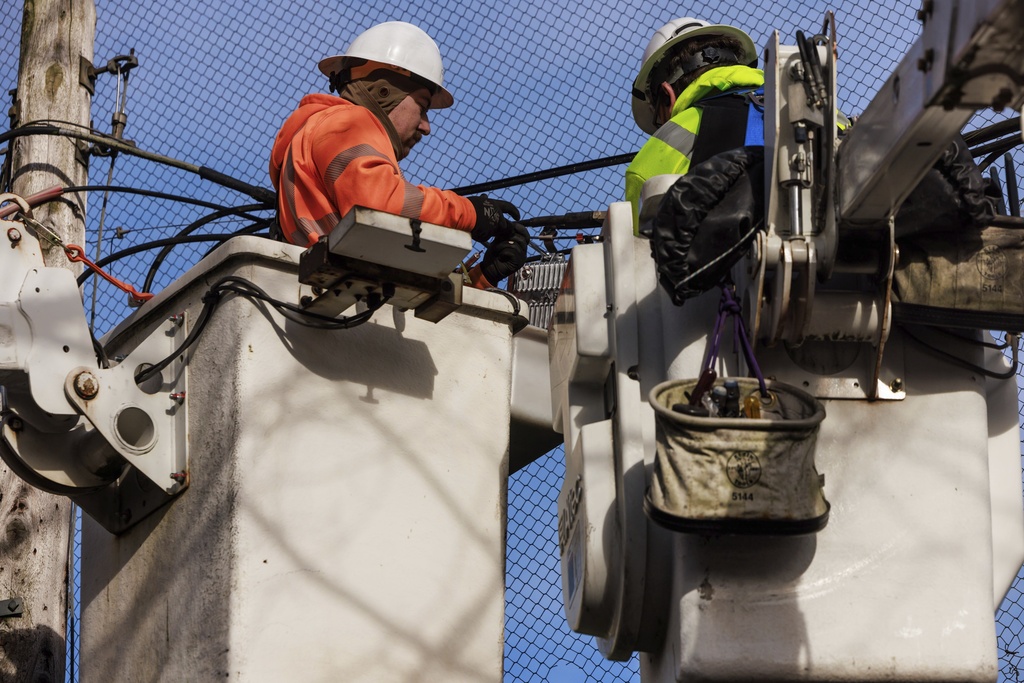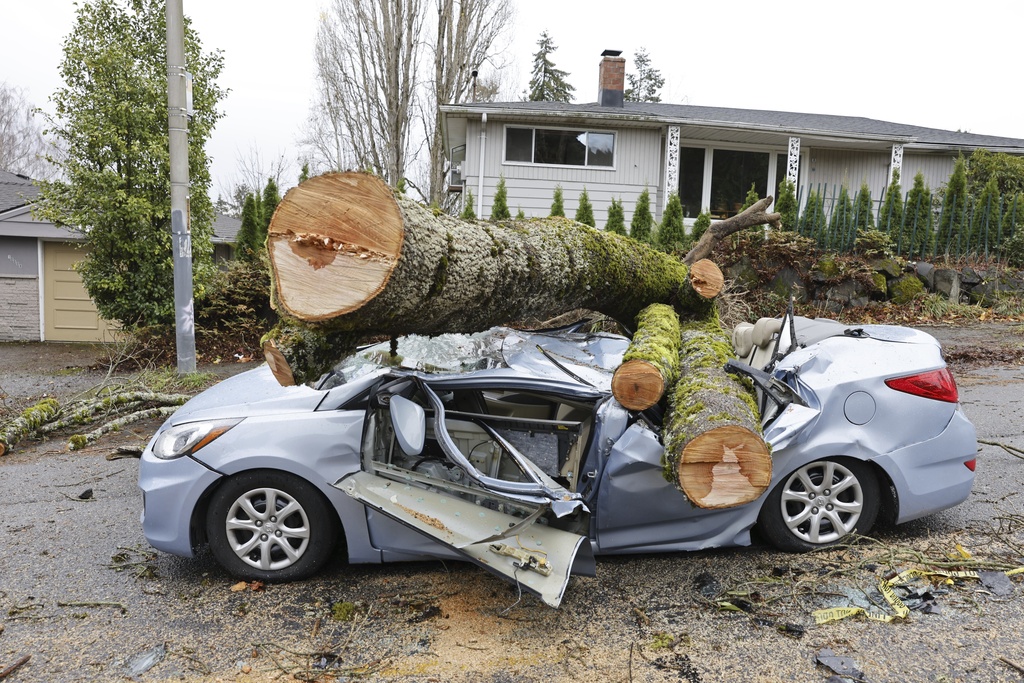Bomb Cyclone Unleashes Chaos in Pacific Northwest and Beyond \ Newslooks \ Washington DC \ Mary Sidiqi \ Evening Edition \ A catastrophic “bomb cyclone” storm system struck the northwestern United States, unleashing hurricane-force winds, torrential rain, and heavy snowfall. The storm caused widespread power outages, school closures, and road blockages while leaving at least two dead from falling trees. Officials issued warnings for flash floods, debris flows, and near-impossible travel conditions across the impacted region.

Northwest Storm Impact: Quick Looks
- Storm Classification: Identified as a “bomb cyclone,” fueled by an atmospheric river—the strongest of the season.
- Rainfall: Up to 16 inches forecast in Oregon, 10+ inches in northern California.
- Flood Risks: Flash floods, debris flows, and rock slides across low-lying areas.
- Heavy Snowfall: Sierra Nevada, Cascades, and Dakotas expected to see accumulations up to 16 inches.
- Fatalities: Two fatalities reported due to falling trees in Washington state.
- Power Disruptions: Over 460,000 without power in Washington; outages in Oregon, California, and Nevada.
- Travel Chaos: Interstate 5 closures, ferry service cancellations, and icy roads across the region.
Deep Look
Rainfall and Flooding Threats
The atmospheric river brought extreme rainfall, with forecasts predicting up to 16 inches in southwestern Oregon by Friday. Northern California also braced for over 10 inches of rain, with flood watches extended through Saturday for areas north of San Francisco. Officials warned of significant risks, including flash flooding, rock slides, and debris flows, particularly in areas with burn scars or steep terrain. These conditions could devastate communities and infrastructure in vulnerable regions.
Heavy Snow and Mountain Hazards
Northern California saw heavy, wet snow creating dangerous travel conditions and threatening structural collapses. Meanwhile, in the Dakotas and Minnesota, the first significant snowfall of the season caused road accidents and travel delays. North Dakota’s Turtle Mountains were projected to receive as much as 16 inches of snow, while areas like Minot prepared for up to 8 inches. Gusting winds reaching 60 mph compounded the hazards, particularly in open areas like Montana and Nebraska.
Lives Lost in Washington State
The storm turned deadly in Washington, where fierce winds caused trees to fall on homes and encampments. In Lynnwood, Washington, a woman was killed Tuesday night when a large tree toppled onto a homeless encampment. Another fatality occurred in Bellevue when a tree crashed into a residence. Firefighters and first responders worked tirelessly to address emergencies, including rescuing individuals trapped by debris.
Power and Infrastructure Disruptions
Nearly 460,000 homes and businesses in Washington were without power by Wednesday afternoon. Oregon reported 2,800 outages, California over 38,000, and Nevada nearly 10,000. High winds and hazardous conditions led to the closure of schools across the region, including three in Reno, Nevada, where high winds also forced the shutdown of main highways between Reno and Carson City. Chairlifts at the Mt. Rose Ski Resort near Lake Tahoe were grounded due to unsafe conditions.
Midwest and Alaskan Impact
The storm’s influence stretched eastward into the Dakotas, Minnesota, and Montana, where icy roads caused accidents and disruptions. In northern Minnesota, state troopers responded to multiple crashes, including jackknifed tractor-trailers on Interstate 94. The National Weather Service advised against travel in parts of northern North Dakota due to treacherous conditions.
Even in Alaska, the storm contributed to high winds in Juneau, where gusts reached 60 mph, prompting local advisories. The breadth and intensity of the storm underscored its far-reaching impact, affecting millions of people across the western and central United States.
Ongoing Concerns and Precautions
For residents like Robert and Lisa Haynes of Issaquah, Washington, the storm transformed their neighborhood into an unrecognizable landscape of blocked roads and scattered debris. “It’s like a snow day,” Robert Haynes noted, “but with no snow.”
Bomb Cyclone Unleashes







